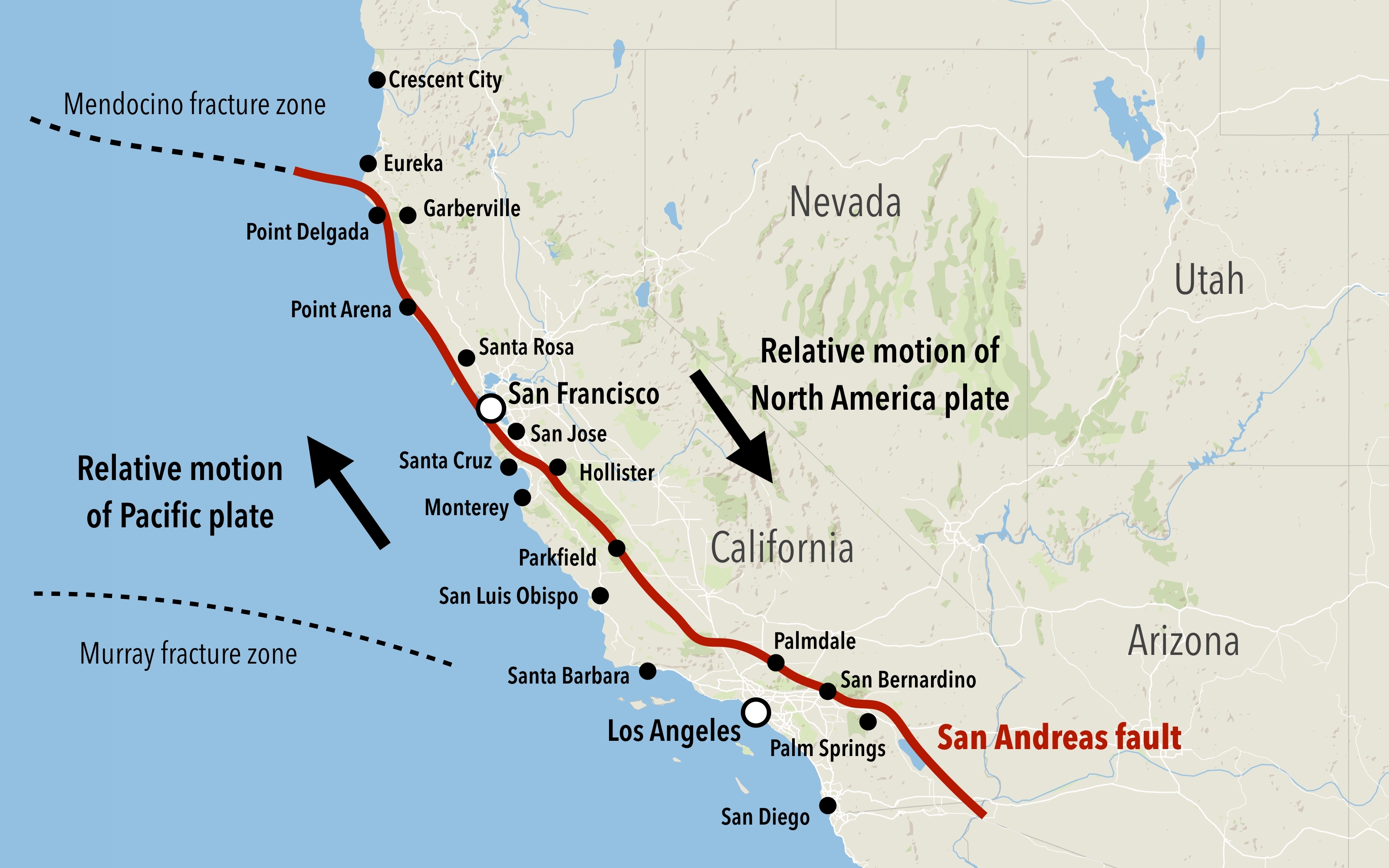Parkfield in California is no stranger to an earthquake – it sits on the San Andreas Fault, after all. Previously, it seemed that a quake with a magnitude of 6 or greater happened here around every 22 years, but after the last one was 14 years late, scientists are now trying to figure out if there’s a reliable way to detect when the next will occur.
To do so, the team looked at seismic wave data leading up to the last, late quake back in 2004; thankfully, researchers have taken a keen interest in studying activity in the region since the 1980s.
It helped that, as the study authors write, the Parkfield region has “very simple geometry and behavior” and is known to be a transitional segment, sitting between a part of the fault where plates can move against each other (“creeping”) and a part where they can’t (“locked”).

The San Andreas Fault passes right through Parkfield.
Image credit: Dimitrios Karamitros/Shutterstock.com
Specifically, the team was looking for any patterns or clues in how the seismic waves caused by a quake lose energy as they travel through the Earth’s crust in this transitional region; this is called attenuation.
And they appear to have found one – in the six weeks leading up to the 2004 earthquake, the loss of energy in low-frequency seismic waves increased, while decreasing for high-frequency waves. Known as bifurcation, according to the authors, this likely reflects what’s going on underneath the surface just before an earthquake, with long cracks forming and short cracks closing up as stress continues to build near the eventual epicenter.
But the real question is, will these measurements allow scientists to predict when the next earthquake will be? And could the same methods then be applied to other seismically active areas? Parkfield is in a fairly remote location, but plenty of earthquakes occur in built-up, densely populated regions. Being able to predict quakes in those places would be more than helpful.
If you’re hoping for an answer to those questions now, then we’re afraid you’re going to have to wait. The researchers won’t truly know if these measurements are a sign until the next earthquake happens.
You might not have to wait long though; study author Luca Malagnini told Live Science that he suspects it’ll happen this year. It’s been 22 years since the last quake, so it’s a pretty reasonable suspicion to have.
That being said, Malagnini and colleagues write that they “cannot find signs about the Parkfield asperity having reached its critical state yet”, so at the very least, it’s probably more than six weeks away.
The study is published in Frontiers in Earth Science.
[H/T: Live Science]
Source Link: Part Of The San Andreas Fault Might Be Waking Up – Could Earthquakes Loom?